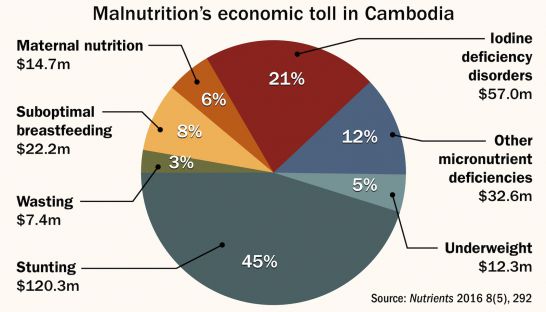|
By Jayant Menon
Cambodia recently made the transition from a low income to a lower middle-income country, according to the World Bank’s rankings. This is good news, but it poses a question: Does Cambodia need to rethink its model of export-driven economic growth, as preferential access for its exports to developed countries is gradually reduced or as aid flows diminish? Not necessarily, at least for now. But it should start preparing immediately.
0 Comments
Many young Cambodian’s today face a range of challenges when they start their working lives; their lack of experience, skills and capital often mean the work they find is poor quality and low-paid. Research by the International Labour Organization (ILO) in Cambodia confirms that while youth unemployment is low (3.8 percent), this rate disguises the high rates of vulnerable employment or work that is dirty, dangerous and demeaning. In addition, for many women and youth in Cambodia today, sociocultural and family pressures are an additional burden that can restrict or limit the freedom they have to pursue their true aspirations.
The 30th Asean summit ended with significant steps towards the realisation of a rules-based, people-oriented and people-centred Asean.
Philippines President and this year’s Asean chair Rodrigo Roa Duterte stated, “Asean has a compelling narrative of positive change that we can hold up to the world. Through our distinct Asean way, our region – with all its promise – stands at the centre of the future of the Asia-Pacific region.” He added that “the peoples of Asean share universal aspirations – that their rights and welfare as a people are protected and promoted.” Cambodia is regarded as one of the most successful post-conflict developing countries – transforming from a war-torn country to a liberal market economy with a high degree of economic openness and high economic performance.
In 2016, Cambodia’s total export volume was $9.2 billion – accounting for 46.3 percent of GDP. Total import volume reached $12.8 billion – accounting for 64.2 percent of GDP. These figures clearly demonstrate that Cambodia’s economy is well connected to the global economy. So maintaining an open and robust international economic system benefits Cambodia. The Asian Development Bank (ADB) calls Cambodia “Asia’s New Tiger” after two decades of high economic performance with a GDP average growth rate of above seven percent. Cambodia is a fast-growing, highly open economy, and just attained lower-middle-income status this year. The country’s strategic location, China’s changing trade patterns, and ongoing regional integration provide further opportunities. The good news is that government has taken important steps (for example, investing in the energy sector to reduce the cost of doing business and improving services in trade, payment, and business registration) that will help Cambodia capitalise on these opportunities. Nonetheless, further policy actions are needed to promote sustained and inclusive growth.
By: Shamshad Akhtar
The Asia-Pacific region’s successful achievement of the 2030 Agenda for Sustainable Development needs to be driven by broad-based productivity gains and rebalancing of economies towards domestic and regional demand. This is the main message of the Economic and Social Survey of Asia and the Pacific 2016, published last week by the Economic and Social Commission for Asia and the Pacific. Such a strategy will not only underpin the revival of robust and resilient economic growth, but also improve the quality of growth by making it more inclusive and sustainable. How should Asia-Pacific policymakers go about implementing such a strategy? Approaches by developing Asia-Pacific economies that are tilted more towards reliance on export-led economic recovery will be ineffective under the current circumstances. By: Setsuko Yamazaki
Cambodia has made great progress in economic growth, poverty reduction and human development. However, a significant proportion of the population remains vulnerable to slipping back to poverty. We observed the International Day for the Eradication of Poverty on Saturday, making this a fitting time to look into the challenges and how Cambodia can promote more inclusive growth and sustainability, particularly in light of Cambodia’s goal to become an Upper Middle-Income Country (MIC) by 2030, and the global launch of the 17 Sustainable Development Goals in New York last month. By: Cyn-Young Park
Cambodia’s development in the past two decades has been remarkable. Economic growth has averaged 7.6 per cent a year since 1995. The national poverty rate has been cut in half. Led by supportive government policy, the country’s strengths – in arable land and natural resources, low-cost labour, and cultural heritage – have secured Cambodia a strong global presence in rice production, garments, and tourism. By: Heng Pheakdey
In 1997 the ASEAN Leaders agreed to transform ASEAN into a stable, prosperous, and highly competitive region with equitable economic development, and reduced poverty and socio-economic disparities. Ten years later, at the 12th ASEAN Summit in Cebu, the leaders affirmed their strong commitment by signing the Cebu Declaration on the Acceleration of the Establishment of an ASEAN Community by 2015. This community will enable free movement of goods, services, capital investment, and skilled labor within the region. |
Categories
All
Archives
October 2017
Disclaimer: All views expressed here belong to their respective author and do not represent the views of Enrich Institute
|


 RSS Feed
RSS Feed
